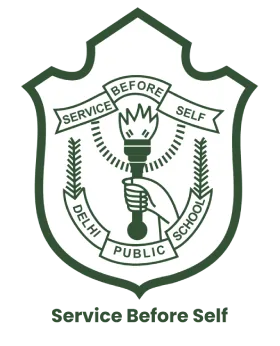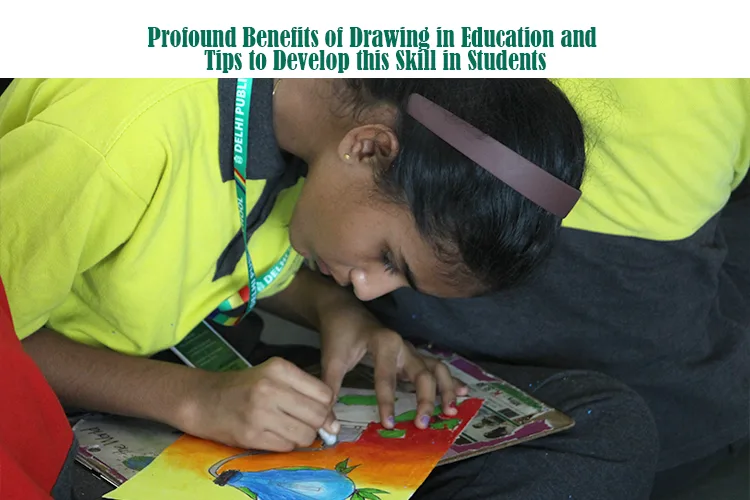Throughout history, people value the artistic mediums of painting and drawing. These creative pursuits have massive educational value outside being a hobby or form of recreation. Besides artistic pleasure, drawing serves as a potent tool for understanding and learning. It helps students actively imagine what they are about to draw which improves their memory.
Further, drawing supports creativity and can help in problem-solving. Students get better at using their hands and learn to pay attention at ground level. Indulging in such activities can help students of all ages learn and express themselves enjoyably.
Why drawing should be a core part of education
For a student in school, drawing is like having superpowers! Why? Because students retain information much better when they draw what they are learning. It makes their brain form a mental image that they can follow.
While dealing with a challenging issue, students can draw a flowmap they can use while finding solutions. It even simplifies lengthy ideas by dividing them into simpler parts.
Sketching is not limited to the art room and the timed art classes in them. Drawing can be used to visualize shapes in math, to observe details in science, or to understand events in history. It’s a wonderful way to unwind and feel good about the things you make. Drawing helps you express your ideas and emotions in a variety of ways. Thus, making drawing an important skill in students is important for their overall development. And let’s not forget about the aesthetic values it adds to your children’s subskills besides academics.
The benefits of drawing for the brain
One can think of drawing as a mental workout. Drawing uses three different skills that are pictorial, semantic, and motoric. Therefore, it is an active encoding method that is perfect for memory and learning. Below are more benefits of drawing that a student can take advantage of.
Promotes learning of difficult ideas
Do you see your child stuck on a difficult concept? Advise them to make an effort to draw it. Complex ideas can become much simpler to understand when they are represented visually. It’s similar to changing an abstract idea into something that your brain is able to see and understand more easily. For this reason, drawing is useful in math and science classes as well.
Strengthens hand-eye coordination and fine motor skills
Children exercise their hands and fingers when they pick up a pencil to draw. Drawing helps students develop fine motor skills, which are necessary for precise movements. It improves hand-eye coordination by strengthening the link between what a child’s hands do and what their eyes see.
Boosts attention to details
Drawing helps people become more perceptive and detail-oriented. People learn to notice subtle nuances, textures, and spatial relationships when they try to draw a subject or scene. Besides the field of art, these observational skills are useful in careers like science, engineering, and even problem-solving.
Practical tips to develop drawing skills in students
Encourage students to focus carefully on their drawings. Begin with simple shapes and outlines. Above all, encourage them to practice regularly using the right tools. Here are some more tips you can use to help students practice for better artistic skills.
Pay attention to what you’re drawing.
Instead of constantly oscillating between the paper and the object, guide students to observe the object first. Explain how capable the human brain is in guiding their hand to sketch the shapes once they have fully understood the subject. But for that, students need to be patient and observe details before beginning.
Begin with basic shapes.
Help students notice that everything can be divided into simple geometric shapes, such as triangles, squares, and circles. They can begin by sketching with the basics, like tracing the human body in triangles or ovals. This helps them with the foundational framework before further complex parts. Children find drawing easier when they approach it step-by-step.
Regularly practice drawing.
Just like any other skill, drawing too improves with practice. Allow students to try drawing something each day, even if it’s just for a few minutes. Tell them that as they draw more, their hand will become more used to the movements, and it will get easier. Since, drawing is all about building a habit.
Use drawing in different subjects.
Show to students that drawing is not limited to art classes. They help in other subjects, such as science, history, or even math. This can be drawing a plant, visualizing shapes, or even sketching a historical event. Push them to use drawings to understand and remember details. Tell them that learning is simpler when they draw what they have learned.
Don’t worry about making mistakes.
It is important that children know imperfect drawings are okay. Instead of focusing on getting it perfect the first time, encourage them to keep trying and learning. Art educators at DPS Warangal believe that making mistakes is a necessary part of learning and that they can always try again or grow from their mistakes. The goal is to improve understanding and self-expression, not to become flawless artists right away.
Drawing is therefore important because it improves memory and concentration by helping a student’s brain function better. Visualizing difficult ideas helps a child grasp them and builds creativity. It’s a process that requires patience, regular amount of practice, trial and error, and the capacity to make mistakes and grow from them. It’s about putting in the effort early on to prevent the need for major changes later on. Give students the proper resources and show them that you value their artwork to motivate them. DPS Warangal includes drawing in the curriculum because our educators know it helps our children develop in wonderful ways.


